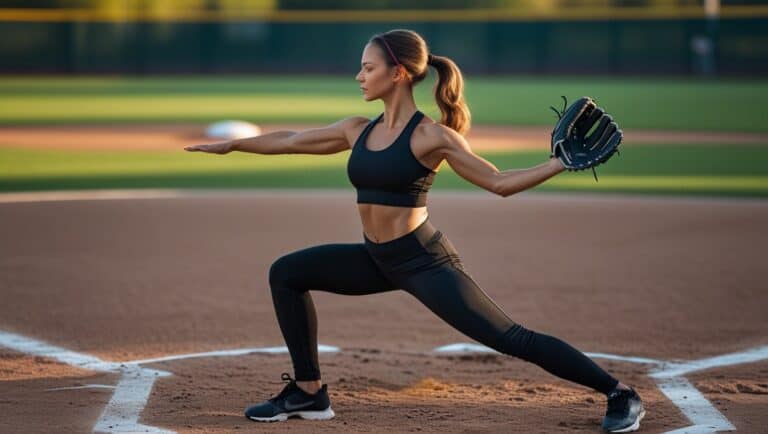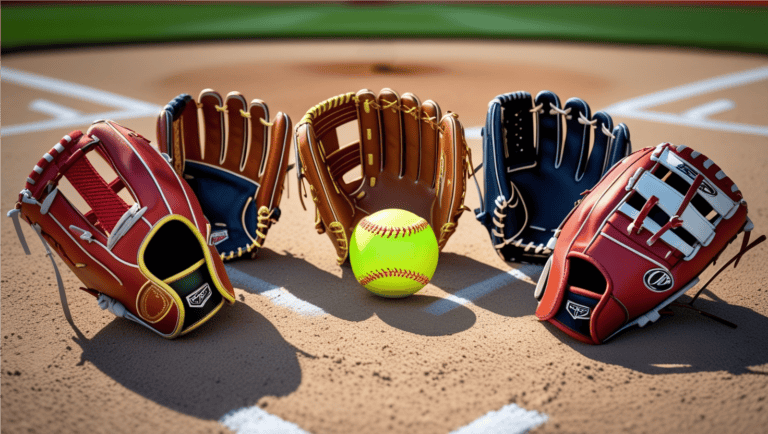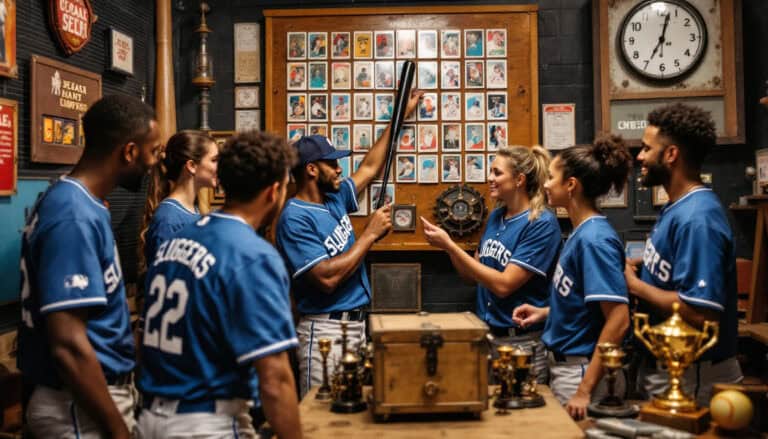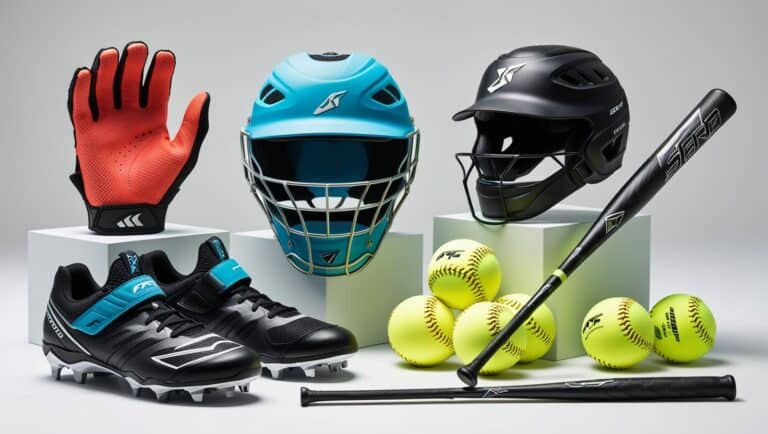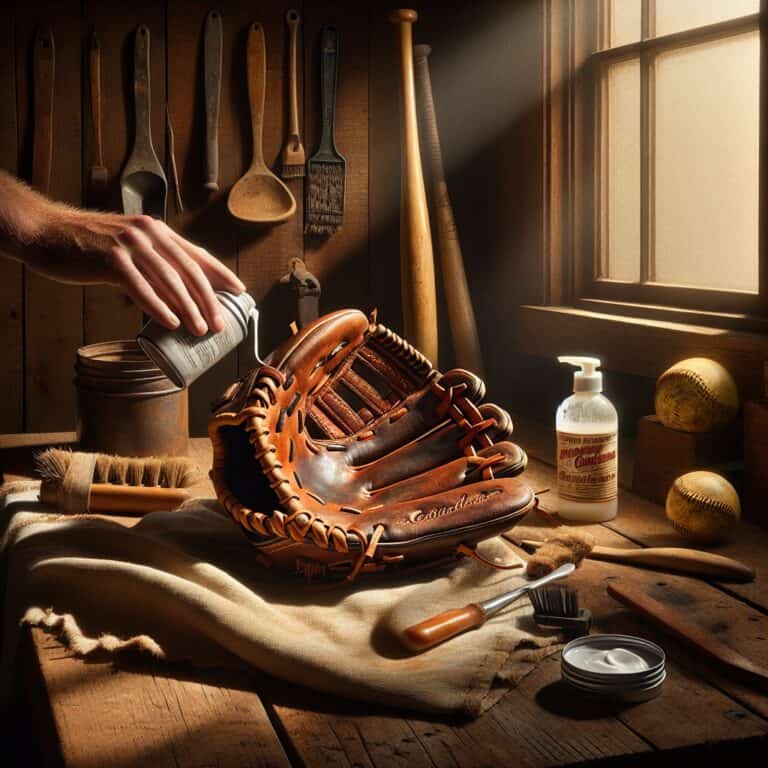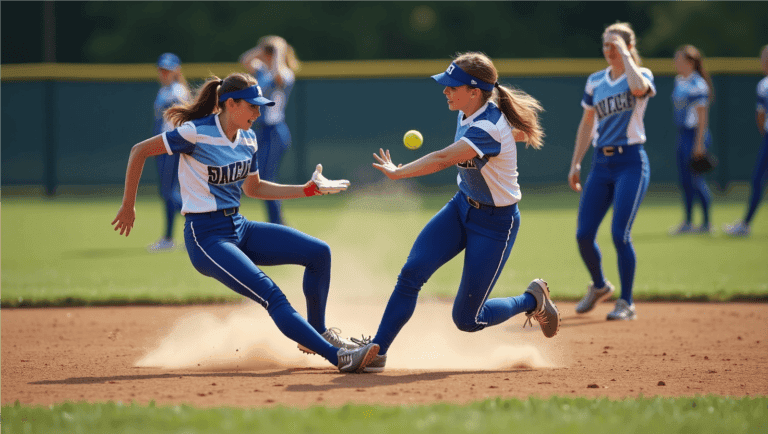Choosing Softball Cleats: 7 Great Pro Tips!
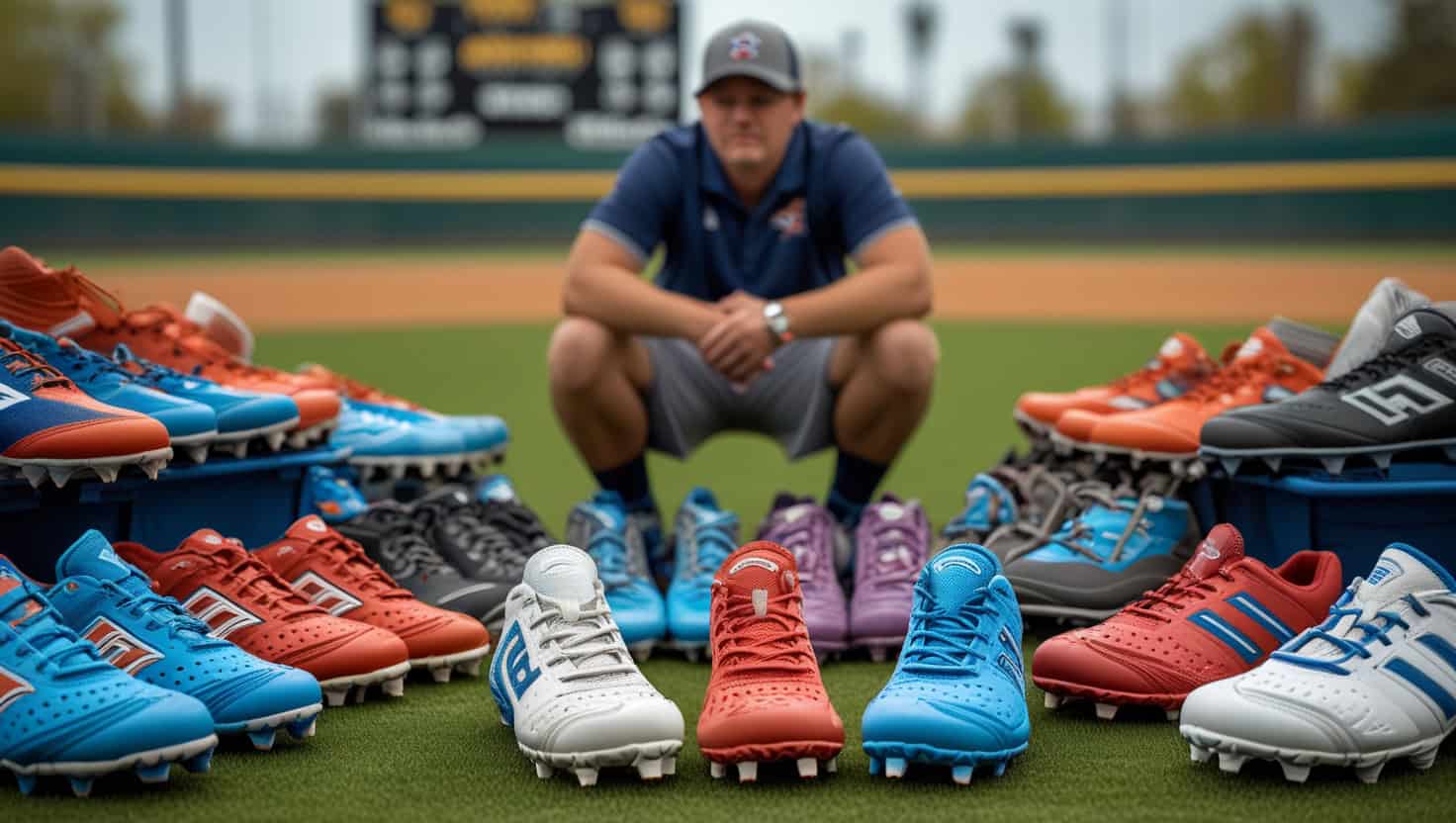
Hey there, softball friends! Are you ready to up your game with the perfect pair of cleats? You’re in the right place! Let’s dig into the details of softball cleats and find out how to choose the best pair for you!
Understanding Different Types of Softball Cleats
Let’s dive into choosing softball cleats, shall we? I’ve been around the diamond a time or two, and choosing softball cleats isn’t as simple as picking the prettiest pair. There’s a whole science to it!
Molded cleats are like the dependable sidekick of softball players. They’re versatile, durable, and perfect for various field conditions. Plus, they’re allowed everywhere. Win-win! Then you have Turf shoes, these are used a lot in place of molded cleats due to their comfort and performance on turf or artificial surfaces. You will also see metal cleats out there but steer clear of those. They aren’t allowed for slow pitch softball due to safety reasons.
Now, let’s talk about the height of these bad boys. You’ve got your low-tops, mid-tops, and high-tops. Low-tops are great for speed demons who need quick ankle movements. Mid-tops offer a bit more support without sacrificing too much mobility. And high-tops? They’re like a fortress for your ankles, perfect for those of us who’ve had one too many sprains.
But here’s where it gets interesting – different positions often prefer different types of cleats or turf shoes. Pitchers, for example, might go for turf shoes for the more even bottom for better foot landing during their delivery. Outfielders might prefer molded cleats for better all-around performance on varying field conditions. It’s all about finding what works best for you and your position.
The Importance of Proper Fit When Choosing Softball Cleats
Alright, listen up, because this is crucial. Choosing softball cleats or turf shoes that fit properly can make or break your game. Trust me, I’ve had my fair share of blisters and sore feet or toes from ill-fitting cleats.
First things first, you gotta measure your feet. You can do this by standing on one of those metal thingamajigs at the shoe store. But even with being measured properly this isn’t the measurement you will take to pick your shoe size. More on that later! And don’t forget to measure both feet! One’s usually slightly bigger than the other.
Now, about the toe room. You want at least a thumb’s width and up to a thumb and a half width of space between your longest toe and the end of the cleat. Any more, and your feet will be be sliding around like crazy! Any less, and you’ll be crying by the third inning.
Listen up! This is very crucial to remember. Usually you will never have the same cleat or turf shoe size as your regular every day shoes. Why is that? I am glad you asked. When you are playing softball you are making quick starts and stops. When you stop suddenly your foot slides forward in the cleat or turf shoe. If you pick a size too small your toes will slam into the front of the cleats and be super painful.
But it’s not just about length of a cleat or turf shoe either. Width matters too, my friends. Your feet should feel snug but not squeezed. And if you’ve got high arches, you might need to look for cleats with extra support or consider adding insoles.
Material Matters: Leather vs. Synthetic Cleats
Okay, so you’ve got your fit sorted. Now let’s talk materials. It’s usually a showdown between leather and synthetic, and boy, do players have opinions!
Leather cleats are like that classic car your dad won’t stop talking about. They’re durable, they mold to your feet over time, and they just feel… premium. But they come with a catch – they need some TLC. You gotta clean ’em, condition ’em, and break ’em in properly. Plus, they can be on the higher price range over $100.
Synthetic cleats, on the other hand, are like that reliable Honda Civic. They’re lighter, often cheaper around $50, and ready to go right out of the box. Limited break-in period required! They’re also easier to clean – just wipe ’em down and you’re good to go.
But here’s the thing about synthetics – they might not last as long as leather. I’ve had synthetic cleats start to fall apart after a season of heavy use. But for the price and convenience, some players swear by ’em.
Traction and Sole Patterns for Optimal Performance
Now, let’s get down and dirty with traction. The bottom of your cleats is where the magic happens, for players. It’s all about those studs and patterns.
Different stud configurations can make a world of difference. You’ve got your standard conical studs, which are great for all-around performance. Then there’s the bladed studs, which give you that extra bit of grip when you’re making quick cuts.
But it’s not just about the stud shape. The pattern matters too. Some cleats have a more aggressive pattern for maximum traction, while others focus on allowing for quick pivots and turns. It’s like choosing between off-road tires and racing slicks – you gotta know what you need.
And don’t forget about field conditions! A pattern that works great on a dry, well-maintained field might have you slipping and sliding on a wet, muddy one. For example turf shoes are not good with wet conditions in the outfield compared to molded cleats. That’s why some players keep multiple pairs of cleats with different traction patterns. It’s not just about being fancy – it’s about being prepared!
Comfort Features to Look for in Softball Cleats
Alright, let’s talk comfort. Because let’s face it, no matter how good you look in those cleats, if your feet are screaming by the fifth inning, you’re not gonna be playing your best.
First up, cushioning and shock absorption. You’re gonna be running, jumping, and sliding in these bad boys, so you want something that’ll take some of that impact. Look for cleats with good midsole cushioning. Some brands even have fancy air or gel cushioning systems. Fancy? Yes. Worth it? Also yes.
Next, let’s talk about breathability. There’s nothing worse than feeling like your feet are in a sauna. Look for cleats with mesh panels or perforations that’ll let your feet breathe. And while we’re at it, moisture-wicking properties are a godsend. They’ll help keep your feet dry and reduce the risk of blisters.
Lastly, don’t skimp on ankle support and stability features. Even if you go for low-top cleats, make sure they’ve got some built-in support. You will be thankful after a long tournament weekend.
Brand Comparison: Top Softball Cleat Manufacturers
Okay, time for a little brand breakdown. Now, I’m not gonna tell you which brand is the best – that’s like asking me to pick a favorite child. But I can give you the lowdown on what’s out there.
You’ve got your heavy hitters like Nike, Adidas, and Under Armour. These guys have been in the game for a while and they’ve got some serious tech behind their cleats. Nike’s got their Flywire technology for a snug fit, Adidas has their Boost cushioning, and Under Armour’s got their ClutchFit upper for a second-skin feel.
But don’t count out brands like New Balance, Mizuno, or even softball-specific brands like 3N2. They might not have the same marketing budgets, but they know their stuff when it comes to softball cleats.
Price-wise, you’re looking at anywhere from $50 to $150+ for a pair of good cleats. Is more expensive always better? Not necessarily. It’s about finding that sweet spot between features you need and the price you’re willing to pay.
Tips for Breaking In and Maintaining Your Softball Cleats
Last but not least, let’s talk about keeping those cleats in tip-top shape. Because choosing softball cleats is only half the battle – you gotta take care of ’em too!
Breaking in new cleats can be a pain – literally. Start by wearing them around the house with thick socks. Then graduate to some light practice sessions before wearing them in a game. I like to put a bandaid around the back of by foot just above the heel to provide cushioning for any rubbing which might happen while breaking in the cleats or turf shoes. I have had some very painful blisters in the past!
When it comes to cleaning, a little regular maintenance goes a long way. Brush off dirt after each use, and give ’em a deeper clean with mild soap and water when needed. If you’ve got leather cleats, don’t forget to condition them occasionally to keep the leather supple.
And finally, know when it’s time to say goodbye. If your cleats are falling apart, have worn-down studs, or just don’t provide the support they used to, it’s time for a new pair.
Alright, team – now you’re armed with all the high level knowledge you need to choose the perfect softball cleats! Remember, the right pair can make a world of difference in your game. From fit to materials, and from traction to comfort, every aspect plays a crucial role in your performance on the field. So, take your time, try on different pairs, and don’t be afraid to ask for advice from your coaches or experienced teammates. Your perfect cleats or turf shoes are out there waiting for you – go find them and knock it out of the park this season! Are you ready to step up to the plate with your new cleats?
Craving more softball wisdom? Unlock game-changing tips below!

